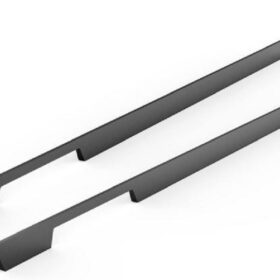Troubleshooting Common Issues with Kitchen Counter Handles
Kitchen counter handles are an essential component of any kitchen, providing both functionality and style. However, over time, these handles can develop a variety of issues, such as becoming loose, sticking, or breaking. To ensure that your kitchen handles remain in top condition, it is important to identify and resolve common problems promptly. This article will explore various troubleshooting tips and techniques to help you address these issues effectively.
Loose Handles
One of the most common problems with kitchen counter handles is that they become loose. This can be caused by a variety of factors, such as improper installation, wear and tear, or excessive weight. To fix a loose handle, it is important to first tighten the screws that attach it to the cabinet. If the screws are already tight, you may need to use a washer or locknut to secure the handle in place. In some cases, you may need to replace the screws altogether.
Sticking Handles
Another common issue is that handles can become sticky or difficult to move. This can be caused by dirt, grime, or food buildup, which can clog the mechanism. To fix a sticking handle, it is important to clean the mechanism thoroughly using a damp cloth and a mild cleanser. Once the mechanism is clean, you can apply a small amount of lubricant to help it operate smoothly. If the handle still sticks, you may need to disassemble it and clean the individual components.
Broken Handles
Broken handles are a more serious issue, as they can pose a safety hazard. If a handle is broken, it is important to replace it as soon as possible. To replace a broken handle, you will need to remove the old handle and install the new one. In most cases, this can be done with a screwdriver or a wrench. It is important to ensure that the new handle is properly secured to the cabinet to prevent further breakage.
Other Issues
In addition to the common issues mentioned above, there are several other problems that can affect kitchen counter handles. These include:
– Rust: Rust can occur on metal handles if they are not properly cleaned and dried. To prevent rust, it is important to wipe down metal handles with a damp cloth after each use and to dry them thoroughly.
– Corrosion: Corrosion can occur on handles made of certain materials, such as aluminum or brass. To prevent corrosion, it is important to keep handles clean and dry, and to avoid exposing them to harsh chemicals.
– Fading: The color of handles can fade over time due to exposure to UV light or moisture. To prevent fading, it is important to keep handles out of direct sunlight and to avoid exposing them to excessive moisture.
Kitchen counter handles can experience a variety of common issues, such as becoming loose, sticking, or breaking. By following the troubleshooting tips outlined in this article, you can effectively address these problems and ensure that your kitchen handles remain in top condition. If you encounter any issues that you are unable to resolve, it is recommended to consult a professional for assistance.
-
2024-11-29Top Trends in Modern Kitchen Cabinet Pulls for 2024
-
2024-11-28The Ultimate Guide to Modern Kitchen Cabinet Pulls- Materials, Styles, and Tips
-
2024-11-27Elevate Your Kitchen Design with These Must-Have Modern Cabinet Pulls
-
2024-11-26Sleek and Stylish- The Best Modern Kitchen Cabinet Pulls for a Contemporary Look










